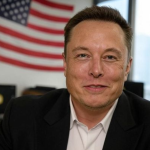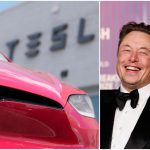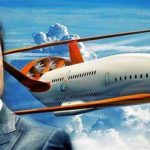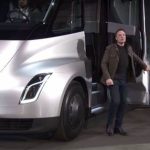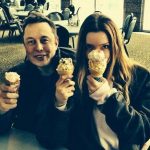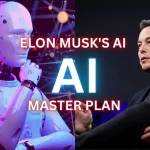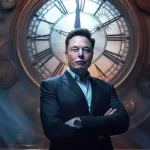Elon Musk: The Importance of Continuous Innovation
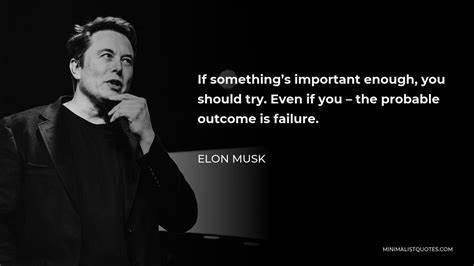
Elon Musk: The Importance of Continuous Innovation
Exploring the Significance of Innovation and Experimentation in Elon Musk’s Career
Elon Musk’s career is a living monument to the power of relentless innovation and fearless experimentation—a saga of a man who doesn’t just dream of the future but hammers it into existence with his own hands. From his early days founding startups like Zip2 and X.com to steering SpaceX and Tesla to global dominance, Musk has built an empire on a refusal to bow to the status quo and a willingness to plunge into uncharted waters, often staking his fortune and reputation in the process. This drive to innovate continuously isn’t just a quirk—it’s the fuel that’s propelled his companies to the forefront of their industries and reshaped the technological landscape of the 21st century. Whether it’s reusable rockets piercing the sky or electric cars humming down highways, Musk’s journey proves that innovation isn’t a one-off spark—it’s a ceaseless fire. Here’s how this philosophy defines his path and why it matters.
The Bedrock of Musk’s Success: Innovation as a Mindset 🌌
Musk’s genius isn’t rooted in luck or inherited wealth—it’s a mindset forged in first principles and tempered by failure. Take his first principles thinking: instead of accepting industry norms, he strips problems to their core truths and rebuilds from scratch. “Boil things down to the most basic truths and reason up from there,” he’s said, a mantra that’s guided his boldest moves. At SpaceX, this meant questioning why rockets cost hundreds of millions—answer: they didn’t have to. By designing in-house and reusing components, he slashed prices. At Tesla, he didn’t tweak existing batteries—he reimagined them, pushing energy density to new heights. This approach turns “impossible” into a challenge, not a wall.
Then there’s his embrace of failure as fuel. Musk doesn’t flinch when things blow up—literally or figuratively. In 2008, SpaceX’s Falcon 1 had failed three times, each crash a financial gut punch. With his PayPal fortune dwindling to $20 million, he bet it all on a fourth launch. It soared into orbit, securing NASA contracts and birthing a space giant. “If you’re not failing, you’re not innovating enough,” he’s quipped, a belief etched into every explosion and pivot. This isn’t reckless gambling—it’s calculated risk, where setbacks are data points, not dead ends.
Key Examples of Continuous Innovation 🚀
Musk’s career is a gallery of innovation in action—each venture a canvas for his restless experimentation.
- SpaceX – Reinventing Spaceflight
- Reusable Rockets: Before Musk, rockets were disposable—single-use relics costing $200 million a pop. The Falcon 9 changed that. Its first successful booster landing in December 2015 was a middle finger to decades of waste, dropping launch costs to under $20 million by 2025. Over 200 landings later, SpaceX iterates with every flight—tweaking landing gear, refining descent algorithms—making spaceflight as routine as a plane ride.
- Starship Evolution: Starship, Musk’s Martian chariot, is a masterclass in iterative design. Early plans used costly carbon fiber; Musk switched to stainless steel—cheaper, tougher, and heat-resistant—saving millions. Methane engines, testable since 2021’s explosive trials, allow refueling on Mars. Each fiery crash—over a dozen by 2025—sharpens the beast, aiming for crewed flights by 2029. It’s a lab on launchpads, innovation unfolding in real time.
- Tesla – Redefining Cars and Energy
- EV Evolution: Tesla’s arc from the 2008 Roadster (200 miles range) to the 2017 Model 3 (over 300 miles) is a tale of relentless upgrades. Musk’s team built custom AI chips (D1, unveiled 2021) for Full Self-Driving (FSD), outpacing rivals. Gigafactories—Nevada, Shanghai, Berlin—cut battery costs 90% since 2010 via scale and chemistry tweaks, driving 5 million EVs sold by 2025. Every model’s a leap, every update a refinement.
- Solar and Storage: Post-2016 SolarCity acquisition, Musk retooled its offerings. The Solar Roof’s sleek tiles and Powerwall’s compact batteries—millions sold by 2025—tie cars to a renewable grid. Iterative design slashed costs (tiles 30% cheaper since 2018) and boosted efficiency, proving energy innovation scales beyond roads.
- The Boring Company – Tunneling Reimagined
- Born from a 2016 Twitter rant about LA traffic, The Boring Company’s Prufrock drill targets 1 mile per week—ten times faster than the industry’s 1 mile per month. The Vegas Loop, launched 2021, moves 4,400 people hourly in Teslas, iterating with each tunnel to optimize EV transport. It’s a niche experiment—68 miles planned by 2025—but a bold stab at rethinking urban flow.
- Neuralink – Brain-Tech Frontier
- Since 2016, Neuralink’s chased brain-machine fusion. A 2021 demo of a monkey playing Pong with its mind evolved into 2025 human trials, where patients control devices via thought. Each step—electrode precision, signal clarity—pushes the envelope, aiming for a future where AI and human cognition blur. It’s radical, unproven, and pure Musk.
Experimentation in Action 🔥
Musk’s playbook is all about doing, not debating.
- Rapid Prototyping: Starship’s test flights explode spectacularly—over 15 by 2025—yet each wreck refines the next. Tesla’s 2019 Cybertruck reveal saw windows shatter; Musk fixed the glass and rolled on. “We learn more from failures than successes,” he says, a creed behind SpaceX’s record 134 launches in 2024.
- Cross-Company Synergy: Tesla’s Dojo supercomputer, built for FSD, speeds Starlink’s satellite routing (4,000 orbiters by 2025). SpaceX’s lightweight alloys toughen Tesla’s Semi. Musk’s empire isn’t siloed—it’s a networked lab, each experiment feeding the others.
- Risk-Taking Bets: Dropping $44 billion on X in 2022 or $100 million into SpaceX in 2002 weren’t safe bets—they were gambles on disruption. X’s verification overhaul tested ad-free revenue; SpaceX’s early flops birthed a $350 billion titan. Musk doesn’t play small—he plays to rewrite rules.
Impact of This Approach 🌍
Musk’s innovation engine doesn’t just build companies—it rewires industries and the world.
- Industry Disruption: SpaceX’s reusability forced Blue Origin’s New Glenn and ULA’s Vulcan to pivot; Tesla’s EV dominance—10% of U.S. sales by 2025—pushed VW’s ID series and Ford’s Mach-E. Musk sets the tempo, daring rivals to dance or die.
- Global Influence: Tesla’s cut 25 million tons of CO2 since 2008; SpaceX’s 300+ missions by 2025 opened space to startups and nations. His $200 billion net worth (2025) isn’t just cash—it’s value forged from constant tinkering with planetary stakes.
- Cultural Shift: Musk’s “try it, break it, fix it” ethos inspires a generation. His X posts—“Next test tomorrow”—make experimentation cool, not cautious. Startups ape his hustle, dreaming big because he proves it works.
Challenges and Trade-Offs ⚖️
Innovation’s not free—it’s a high-wire act.
- High Stakes: 2008 nearly broke Musk—SpaceX and Tesla teetered on collapse, saved by that Falcon 1 win and a Tesla lifeline. X’s 2023 ad losses ($1 billion) stung after his tweaks misfired. All-in risks collapse if the dice roll wrong too long.
- Criticism: Overpromises—like FSD by 2019 or Mars by 2024—draw eye-rolls. Cybertruck’s glass flop went viral for the wrong reasons. Musk shrugs: “Deadlines are guesses—results matter.” Tesla’s $1 trillion valuation and SpaceX’s orbit monopoly back his defiance.
The Musk Innovation Engine 🌟
Musk’s career is a perpetual motion machine—every failure a lesson, every win a launchpad. He’s not the suit in the boardroom but the scientist in the lab, living at Starbase to oversee Starship, coding at Tesla to debug FSD. His ethos—innovate or stagnate—built SpaceX into a spacefaring titan, Tesla into an EV empire, and a legacy worth more than his $200 billion fortune. It’s not about wealth—it’s about rewriting what’s possible, one wild idea at a time.
Take Starship’s methane switch: a 2021 tweak for Mars refueling sparked years of engine tests, each blast a step closer to 2029. Tesla’s Gigafactory in Shanghai, built in 11 months, iterates production—robots weld faster, batteries pack tighter—pushing 1 million cars yearly by 2025. Neuralink’s brain chips, from monkey Pong to human cursors, evolve with every implant. The Boring Company’s Vegas tunnels grow smarter—AI routes Teslas smoother with each mile. Musk’s not chasing a finish line; he’s chasing infinity, tweaking, testing, and dreaming on the fly.
For Musk, the future isn’t a distant shore—it’s a workbench, strewn with tools and sparks. He’s never done tinkering, and that’s his gift to us: a world where innovation isn’t a buzzword but a way of life, where the next breakthrough is just one bold experiment away. Strap in—his lab’s open, and the universe is the limit.
